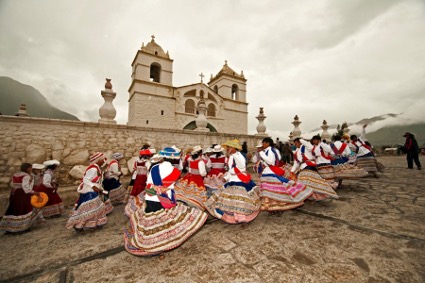
“Why the fate of indigenous traditions is linked to tourism in Peru,” is the title of an article in Travel Trade Gazette (TTG).
“In the small, mostly indigenous, town of Andagua, in Peru’s Valley of the Volcanoes, we gather in a room just off the main plaza. At this point in the evening, the sun is gone and the air is flooded with an Andean chill, but the women are waiting for us, piping hot muña tea in hand,” reads the lead.
TTG is a UK-based media platform dedicated to the travel and tourism industry, aimed at tourism professionals. It offers news, market analysis, trends, events, networking opportunities, and awards recognizing excellence in the tourism sector.
Journalist Alexandra Steffgen was invited by the Commission for the Promotion of Peru for Export and Tourism (PromPeru) to a press trip as part of the AdventureNEXT Peru event, held in southern Arequipa region last year.
During her journey, she witnessed initiatives and traditions led by indigenous women, which she later featured in the TTG article.
In the village of Yanque, where she stayed, the guest saw the traditional Wititi dance of the Colca Valley, where women spin in embroidered skirts with blue and gold threads.
At the Cruz del Condor viewpoint overlooking the Colca Canyon, she saw women weaving alpaca wool into colorful textiles.
The article also highlights companies promoting women’s inclusion. For example, an indigenous-owned company has just launched its first women-only expeditions to Machu Picchu, where everyone involved, from tourists to cooks, porters and guides, are women.
“Tourism doesn’t only give indigenous women in Peru a way to make money but also acts as an incentive to preserve ancient traditions,” reads the article.
Another example is the Awajun indigenous community of Shampuyacu in the Amazon, with their cultural tourism project Bosque de las Nuwas.
Their story is inspiring: After losing much of their natural habitat to deforestation, the women of the Shampuyacu community banded together to conserve an area of the forest where they could tend to medicinal plants to harvest for tea. Tourists who visit create an incentive to keep the past alive and provide a means to invest in their families.
“While these and other attractions give travelers a sense of authentic Peruvian culture, the indigenous women who power them get to maintain their cultural heritage and achieve financial freedom,” the article concludes.P personnel in charge.